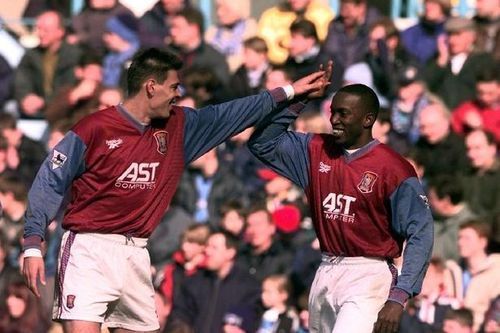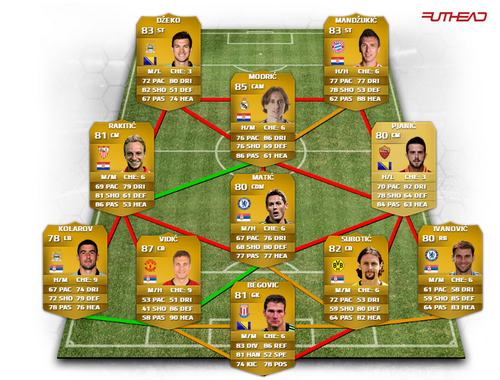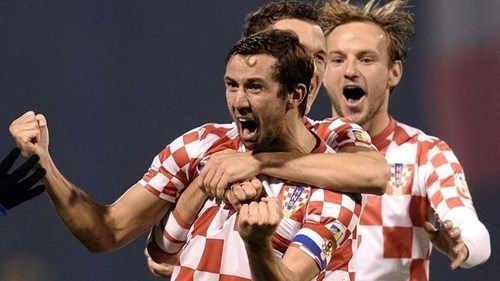How would Yugoslavia look today?
I stumbled across an interesting hypothetical the other day: What would Yugoslavia’s team look like if the country still remained today?
For those of you that are wondering the significance of the question, Yugoslavia was a country formed in the First World War in 1918. Its eventual demise in 2003 was a result of the ‘Yugoslav Wars’ from 1991-99, which started the slow process of its six constitutes breaking free and declaring independence.

First of the six to break free was Croatia and Slovenia in June 1991, then Macedonia a few months later, Bosnia & Herzegovina then escaped in March 92’ before the remaining two constitutes, Serbia and Montenegro, finally departed united in 2003, before going their separate ways three years later. Sounds very boy-bandish doesn’t it? I think that would make Robbie Williams Croatia.
11 years later, those nations represent a far cry from their former Yugoslav staple and ex-Aston Villa forward Savo Milosevic (I still remember him partnering Dwight Yorke for Villa), who Villa fans kindly nicknamed Miss-a-lot-evic for his frequent barren spells.

Given the talent at the six countries disposal, below is a starting eleven consisting of the nation’s having a reunion of sorts.
Sammir Handanovic (Inter Milan & Slovenia)
Darijo Srna (Shakhtar Donetsk & Croatia)
Branislav Ivanovic (Chelsea & Serbia)
Nemanja Vidic (Inter Milan & Serbia)
Aleksander Kolarov (Man City & Serbia)
Luka Modric (Real Madrid & Croatia)
Mirajem Prjanic (AS Roma & Bosnia)
Ivan Rakitic (Barcelona & Croatia)
Mario Mandzukic (Bayern Munich & Croatia)
Stevan Jotevic (Man City & Montenegro)
Edin Dzeko (Man City & Bosnia)
And the quality doesn’t stop there. The bench is a quality-laden with an array of stars like Ivan Perisic (Wolfsburg & CRO), Goran Padev (Napoli & MAC), Mirko Vucinic (Juventus & MON), Nevan Subotic (Dortmund & SER), Asmir Begovic (Stoke & BOS), Nemanja Matic (Chelsea & SER), Josip Ilicic (Fiorentina & SLO) and Dejan Lovren (Southampton & CRO) waiting in the wings.

The above FIFA team isn’t bad is it? Not at all.
With a combined population of just over 20 million, which is under a third of England’s, it’s an impressive collection of proven stars, which play for the very top sides in Europe to vouch for their calibre.
Great Britain by contrast, though politically run in just a tad slightly less oppressive manner, has five constituents (let’s say for the sake of this that the Republic of Ireland haven’t broke away). Truth be told however, apart from Gareth Bale and Seamus Coleman, would anyone else from the other nations really have a chance at breaking into England’s team?
In the athletic domain, we compete under the Great Britain collective. Scotsmen Andy Murray represents Britain in the Davis Cup. It’s not inconceivable that the football team could in theory exude the same make-up.
The Yugoslavian national team was ranked as high as 6th in the FIFA rankings back in 1998, though England fans will know how misleading they can be. Whether the independent countries have only really truly flourished since going their separate ways is up for debate. Without delving into national agendas or infrastructures, they have undoubtedly produced a world-class ensemble worthy of gracing any World Cup and genuinely competing.

Bosnia and Croatia are the only nations at this year’s finals but both have made auspicious if not respectable starts. With all England’s advanced training centres and top of the line academy systems which should equate to success, they appear an ostensible notion. These countries have amassed wide ranging talent without elite leagues in their home country or any fast-track routes to the main stage for young players.
Maybe there isn’t a special formula for producing players after all…if you got them, you’ve got them?



